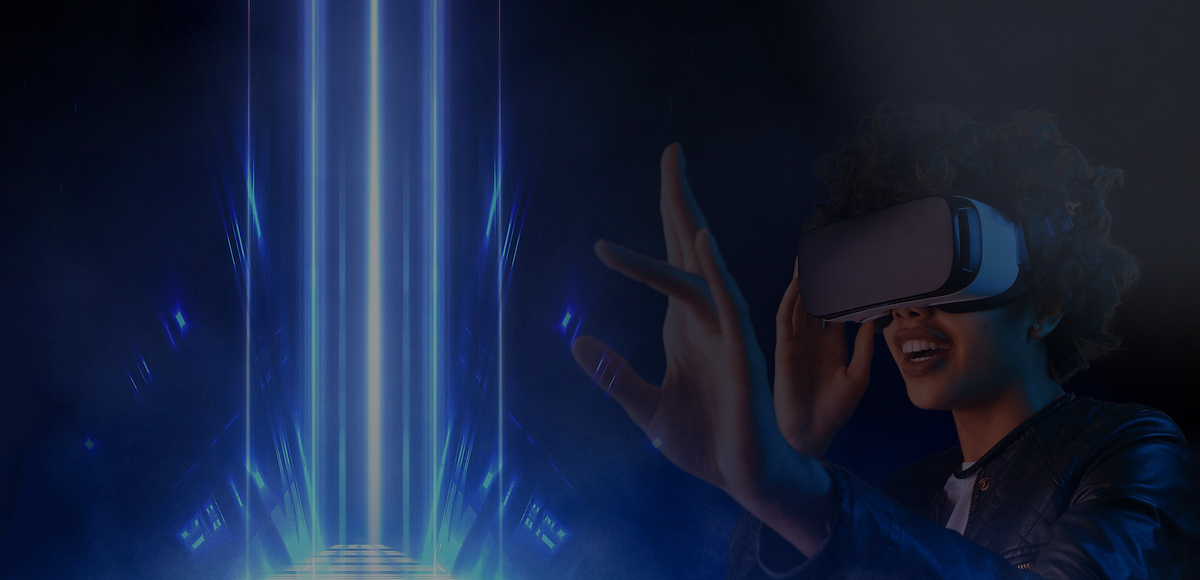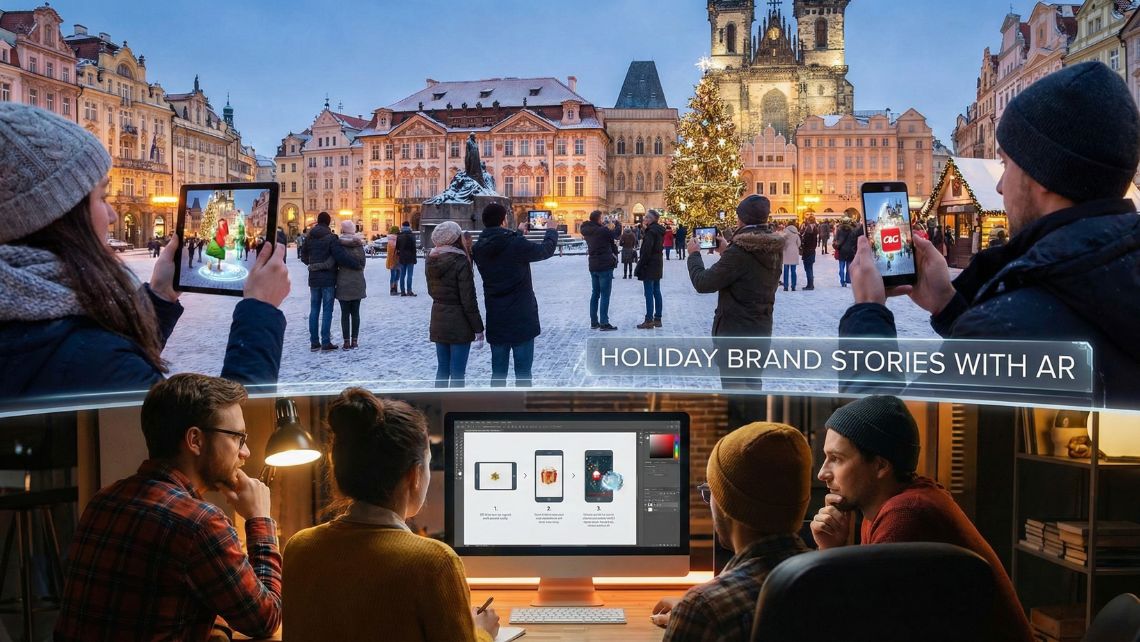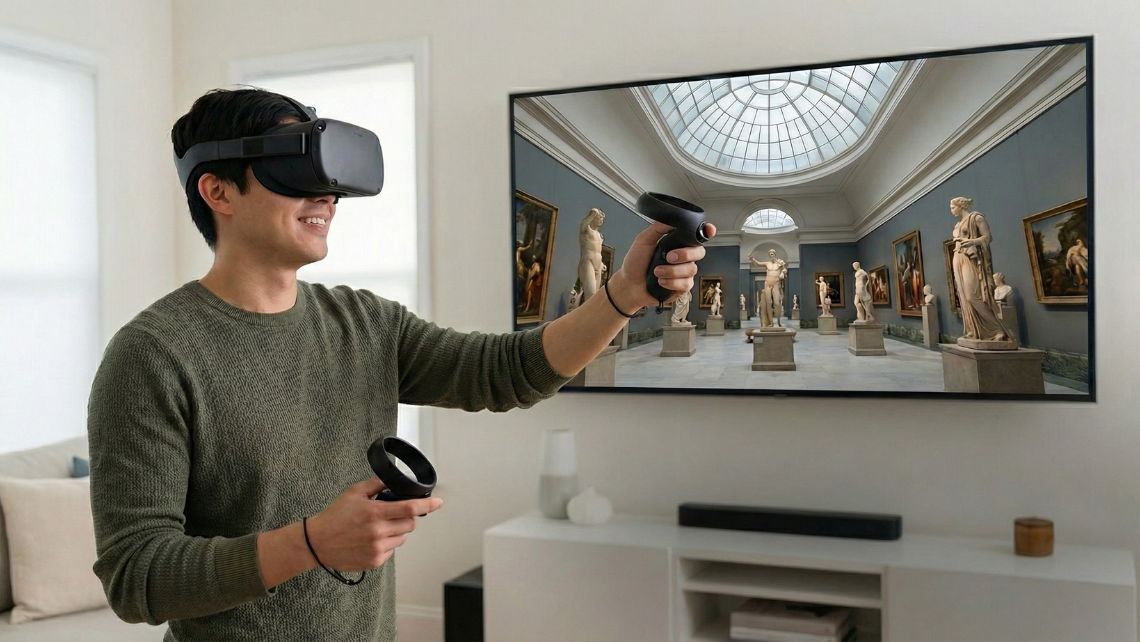
Future of Immersive Exhibition: Hosted VR Events Solutions Explained

An immersive exhibition is no longer a novelty—it has become the cornerstone for experiential storytelling in brand activations and trade shows. By seamlessly merging physical spaces with virtual worlds, immersive exhibitions offer audiences multisensory experiences that are both memorable and meaningful. In this article, we explore the rise of hosted VR events as the definitive blueprint for the next wave of immersive exhibition, uncovering benefits, real-world applications, and best practice strategies.
As hosted VR events increasingly dominate exhibition floors, they enable brands to engage with attendees on an entirely new level—transforming visitors into active participants. From dramatic product reveals to interactive training demonstrations, the chemistry between physical presence and digital spectacle sets the stage for unforgettable experiences. We’ll unpack why hosted VR exhibits are the future of exhibition design, showcasing credible case studies and illustrating how organisations can harness this powerful tool for brand impact and measurable returns.
Why Hosted VR Is Transforming the Immersive Exhibition Landscape
Defining Hosted VR Events
Hosted VR events are turnkey virtual reality solutions provided by specialist studios that manage the entire VR booth lifecycle—from equipment delivery and setup to content management and on-site technical support. These events are not stand-alone; they are strategically embedded within a physical exhibition structure to elevate the visitor experience through interactivity, story immersion, and sensory engagement.
Strategic Value for Exhibitors
Immersive exhibitions empowered by hosted VR carry multiple strategic advantages:
Boosted Engagement & Dwell Time
With VR headsets, participants are dropped into carefully constructed worlds—be it a branded storyworld or interactive demo space. Studies have shown that immersive environments significantly increase the time visitors spend at your booth, greatly enhancing brand recall and affinity. According to insights from the Ortmor Agency, augmented and virtual reality solutions are transforming how businesses forge meaningful event connections through immersive narrative techniques.
Educating Through Experience
Unlike passive displays, hosted VR allows attendees to learn by doing. For instance, complex industrial processes featured in VR can simplify technical training while captivating audiences. A great example is the Hilti Future Laboratory – VR Animated 360° Video, where Immersive Studio showcased industrial workflows and safety protocols using VR, delivering deep engagement through experiential learning.
Data-Driven Insights
Interactive virtual applications offer rich analytics—tracking metrics such as usage duration, interaction choice patterns, and spatial engagement. These insights provide event marketers and sales teams with real-time feedback to optimise their approaches and future activations. Hosted VR exhibitions enable this intelligent data capture, unlike traditional passive setups.
Scalability and Reach
Hosted VR events fit flexibly into various formats—exhibition stands, pop-up activations, or hybrid events. Through browser-accessible content offered by Web Based Virtual Experiences, remote audiences can also participate. This hybrid model magnifies your immersive exhibition reach, bridging in-person and digital audiences under one cohesive experience.
Key Benefits of Hosted VR at Exhibitions
Engagement That Drives Storytelling
A well-crafted VR narrative immerses users in a brand universe. From experiential tours like the Toyota Aygo X Undercover – Immersive Virtual World to Nike’s Euro 2021 Extended Experience, guests are no longer spectators—they become protagonists. These creative executions not only capture attention but also evoke powerful emotional resonance within the immersive exhibition environment.
Emotional Impact and Memory Retention
Memory studies underscore that emotions amplify recollection. Immersive exhibitions built around hosted VR leverage sensory stimuli—visual, auditory, spatial—to imprint experiences into visitor memory. Brands like Barclays have embraced this by deploying the Barclays Interactive Virtual Reality Experience at corporate events to emotionally connect with audiences and showcase innovation through personalised and vivid storytelling.
Real-Time Analytics and Lead Capture
Unlike static stalls, hosted VR environments track your audience. Dwell times, interaction pathways, and user choices unveil actionable insights. These metrics drive continuous improvement and create segmented lead reports, enabling more personalised post-event engagement. This form of intelligent analytics strengthens the strategic value of every immersive exhibition.
Reach Beyond Walls via Web-Based Virtual Experiences
Hosted VR doesn’t end when attendees leave the venue. By integrating Web Based Virtual Experiences, brands can host browser-accessible VR simulations that replicate on-site installations. This hybrid capability expands your immersive exhibition’s lifespan and audience reach far beyond the constraints of physical location.
Cost-Effectiveness and Logistical Simplicity
Traditional large-scale physical installations involve high costs in transportation, storage, and logistics. Hosted VR booths, by contrast, use compact, lightweight hardware paired with fully managed services. From setup to breakdown, Hosted VR Events are streamlined for convenience, enabling organisers to focus on high-quality visitor engagement without operational burdens.
Behind the Scenes: How We Deliver Hosted VR Events
Hosted VR Events | Pop Up Virtual Reality Hire UK
At the heart of every successful immersive exhibition is seamless execution. Immersive Studio’s Hosted VR Events | Pop‑Up Virtual Reality Hire UK service offers a fully managed solution tailored for trade shows, exhibitions, and brand activations. From headset configuration to on-site staff, every detail is handled to ensure consistent and compelling visitor experiences. Our pop-up VR booths are scalable and adaptable—equally at home in conference centres, public plazas, or retail showrooms.
Clients gain access to industry-leading VR hardware, pre-tested software environments, and immersive content tailored to their messaging. Whether delivering high-throughput demonstrations or deep brand narratives, these installations are optimised for performance and accessibility.
Immersive Installations and Experiences
We don’t stop at screens and headsets. Every immersive exhibition we build is a multi-sensory experience. Our team combines virtual environments with physical set design, haptic feedback, lighting, and spatial soundscapes. This blending of tactile and digital elements increases emotional impact and recall. Visitors don’t just observe a product—they feel it. Whether stepping into a bespoke futuristic lab, a themed adventure zone, or a branded sensory chamber, the interplay of real and virtual delivers depth. Explore the craft behind this approach through our Immersive Installations and Experiences service.
Virtual Reality
Immersive Studio specialises in transforming complex stories into vivid VR journeys. Our Virtual Reality service empowers brands to craft engaging, interactive worlds for live audiences. For example, automotive brands can walk guests through a car’s design evolution, while FMCG companies can invite attendees into dynamic environments that mirror lifestyle aspirations.
These custom-built experiences can serve multiple goals—product launch, staff training, or public education—and are calibrated for intuitive use. As the digital core of any immersive exhibition, VR allows brands to stand apart with unique narratives that visitors not only hear but live.
Web Based Virtual Experiences
Accessibility is no longer a luxury—it’s a necessity. Our Web Based Virtual Experiences allow companies to extend their immersive exhibition footprint far beyond physical venues. These experiences are delivered via browsers, enabling remote participants to explore branded spaces from anywhere in the world.
This functionality is especially valuable for hybrid exhibitions or global campaigns. Companies benefit from increased reach and inclusivity, while data tracking ensures all visitor behaviour—onsite or online—is captured for post-event insights.
Interactive LED Booth Solutions For Events
Incorporating high-impact visuals, our Interactive LED Booth Solutions For Events are designed to complement VR zones within exhibition stands. These dynamic displays draw attendees in, create compelling backdrops, and provide live or looped content that enhances narrative continuity.
Used in tandem with VR setups, LED environments build atmosphere and immersion. Whether simulating motion, visualising data, or amplifying brand identity through kinetic imagery, these installations turn any immersive exhibition into a visually magnetic destination.

Future Trends for Immersive Exhibition Using Hosted VR
The Rise of Hybrid Physical–Digital Events
As audiences increasingly expect both live and remote access, immersive exhibition design is evolving to include hybrid event models. This combines hosted VR pods with digitally streamed experiences via platforms such as WebXR. Such integration ensures remote participants can enjoy the same VR storyworld as in-person attendees, expanding reach and increasing inclusivity.
Advancements in Haptic Feedback and Multi-Sensory Integration
The next generation of immersive exhibition solutions will integrate refined haptic technologies and even olfactory elements. Imagine visitors not just seeing and hearing a story, but feeling virtual textures or experiencing environmental cues like simulated wind or subtle fragrance. These sensory layers heighten emotional impact and memorability.
AI Driven Personalisation
Artificial intelligence is reshaping immersive exhibition pathways by personalising content in real time. VR experiences can adapt to individual user choices—tailoring product information, analytics, or journey style to the participant. These data-driven narratives improve engagement and offer deeper audience insight for marketers and event strategists.
Sustainable Practices and Eco Friendly Design
Hosted VR events inherently reduce physical construction waste and energy usage. Future immersive exhibition strategies will lean even further into sustainability by using recyclable materials, energy-efficient hardware, and carbon-offset digital hosting. This approach aligns with increasing corporate responsibility mandates and audience environmental expectations.
360° Audio and Immersive Soundscaping
Beyond standard stereo sound, modern immersive exhibition environments will adopt spatial audio to create more realistic awareness. As VR headsets incorporate object-based audio technologies, environments will feature moving sound sources, directional cues, and live-reacting acoustic profiles—deepening immersion at every turn.
How to Plan a Hosted VR Exhibition Activation
Define Objectives and KPIs
Successful immersive exhibition activations start with clear objectives. Are you aiming for brand awareness, product demonstration, training, or entertainment? Determine measurable KPIs such as average headset dwell time, social media content generated, lead counts, or post-event survey scores.
Select the Right Experience Format
Choose from formats such as guided simulations, 360° narrative videos, or interactive branded games. For example, a hybrid training expo might benefit from a Hilti-style 360° video. Meanwhile, product launches could use interactive gamified VR modeled after the Toyota Aygo X virtual world.
Integrate Physical Design Seamlessly
To avoid jarring transitions, VR pods should blend into the surrounding exhibition architecture. Collaborate closely with designers to integrate tactile elements, haptics, and LED visuals. This is where services like Immersive Installations and Interactive LED Booths elevate the entire experience.
Plan Logistics and On Site Support
Hosted VR involves hardware transport, technical configuration, and user support. Your VR partner should coordinate power, safety, footflow, and queue management. Professional attendants guide participants, while IT teams monitor system health to ensure maximum uptime and audience satisfaction.
Measure Success and Iterate
After your immersive exhibition concludes, analyse quantitative and qualitative results. Combine VR analytics—such as interruption events or drop-off points—with visitor interviews or feedback surveys. Use these insights to refine technical settings, narrative flow, or even booth layout for future activations.
Wrapping Up
As we’ve explored, the future of event engagement lies in the seamless integration of virtual and physical worlds, and hosted VR is at the heart of every compelling immersive exhibition. From the sensory-rich environments created with Interactive LED Booth Solutions to the browser-accessible universes developed under Web Based Virtual Experiences, Immersive Studio brings vision to life through expertly orchestrated services. By combining narrative-driven Virtual Reality, tactile design in Immersive Installations and Experiences, and full lifecycle management via Hosted VR Events, we ensure each activation is not only memorable but measurable.
Whether deploying an elegant VR pod at a corporate summit or rolling out a multi-user setup for a major trade show, our approach balances creativity, logistics, and technical excellence. Each event is conceived and executed with purpose: to deliver emotional resonance and insight-driven results. If you’re ready to explore how a hosted VR-powered immersive exhibition could transform your next event, our team is eager to collaborate.
Frequently Asked Questions - Immersive Exhibition
What is an immersive exhibition experience?
An immersive exhibition blends physical environments with interactive digital content—often using VR, AR, LED installations, haptics, and spatial audio. This multisensory approach engages visitors actively, transforming them from passive observers into participants. Brands use this format to convey narratives or showcase products in ways that are emotionally resonant and memorable.
How much do VR exhibits cost to hire?
The cost of hiring a hosted VR exhibit depends on complexity: hardware quality, content customisation, staffing, and duration. A basic pop-up VR pod may start from several thousand pounds, while fully integrated multi-pod installations with physical sets, LED visuals, and bespoke narratives can reach higher investment levels, justified by impressive audience engagement and data capture.
Can virtual reality work at hybrid events?
Yes. Hybrid events combine live and online elements seamlessly. Immersive Studio’s Web Based Virtual Experiences replicate hosted VR installations in browsers, enabling remote users to participate in the same narrative world. Real-time analytics from both onsite and online attendees create richer audience insights and extend reach beyond venue walls.
What are the advantages of VR in exhibitions?
Hosted VR elevates exhibitions through deeper engagement, increased dwell time, emotional storytelling, and real-time analytics. It transforms product demo into experiential learning and amplifies brand messaging. Moreover, the modular and scalable nature of hosted VR installations makes them cost-effective and adaptable across different venues and industries.
How long does it take to set up a VR booth at an event?
Setup duration depends on the complexity of the immersive exhibition. A single VR pod with headphones and seating may take a few hours including AV testing. Larger installations with LED backdrops, physical set builds, queue management, and multi-user systems can require more time to install and fine-tune and may need to be done in advance of the day of the event. Our signature Hosted VR Events service ensures efficient planning and flawless delivery.
Is VR more effective than physical displays?
While static displays catch the eye, immersive VR delivers emotional depth and interactivity. VR experiences embed brand narratives within memory-rich virtual environments, often driving higher recall and engagement than traditional exhibits. For campaigns aiming for measurable impact—such as demo-to-sale conversion or training effectiveness—hosted VR is proven to outperform static alternatives.
How do you measure success in a VR exhibition?
Success metrics include dwell time, session counts, interaction depth, lead capture accuracy, post-event surveys, and social media engagement. VR analytics track choices made in the experience, while onsite feedback validates emotional impact. These insights guide future activations, making hosted VR installations both creative and data-driven in achieving business goals.


